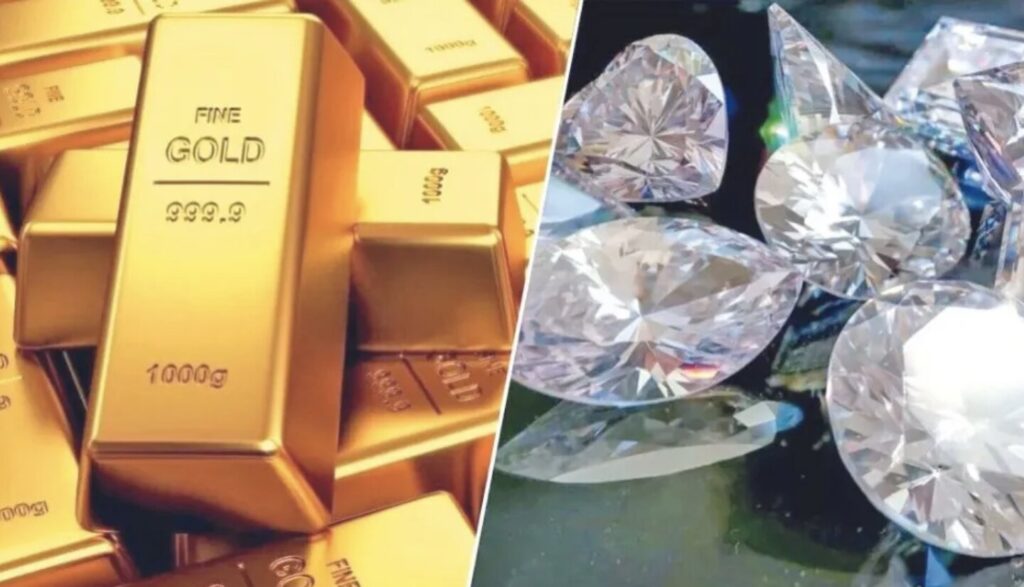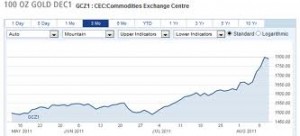On May 15, Christie’s auction house sold a huge diamond to the Harry Winston firm for $27 million, setting a new record price for a colorless diamond in the process.
And while diamonds have been a girl’s best friend long before Marilyn Monroe crooned those words, it’s always been tough for investors to get into the game. Diamonds are considered one of those esoteric fields; an area of investing too small, complex, and exclusive to bother with for most.
Let’s face it, up to now, there’s much more subjectivity in rating diamonds than gold. And that makes it more challenging for investors if they want to hold the physical asset.
But it’s worth the effort: Historically, diamonds have proven themselves to be very price stable – with a growth kicker. What’s more, technology is making standardization of gemstones easier, making valuations more transparent.
That means diamonds are becoming an increasingly popular store of value.
According to the Financial Times, between 1999 and 2011, three-carat diamonds have risen in value by 145% while five-carat diamonds have risen 171%, as measured by the Rapaport Diamond Trade Index. The thinking is the relative price stability of diamonds is due to the fact that there’s little speculative capital in this sector, estimated by some at no more than 1% of the market.
Rising Demand
Like other commodity markets these days, diamond prices are most influenced by global economic growth. Larger developing nations, especially the BRICs (Brazil, Russia, India and China) are growing their middle-class populations.
According to Kris Schellhas of the Investment Diamond Exchange in Los Angeles, China has seen diamond demand compound 32% annually since 2005. What’s more, Chinese and Indian buyers often view diamonds not only as jewelry, but also as a store of wealth.
In China, diamonds are the fastest growing discretionary purchase.
Matt Manson, President and CEO of Stornoway Diamond Corp. (TSX:SWY), a developing junior diamond miner, also sees diamonds increasingly being thought of as an investable asset. According to Manson, “The target in the future is to have 15-20% of world diamond demand be people purchasing diamonds for just this purpose, for physical diamonds as an investment vehicle.”
2 Factors That Change Diamond Investing
Beautiful as they may be, getting to the point where diamonds are a more common physical investment has proved difficult.
By comparison, gold and silver are much more straightforward. One ounce of 0.9999 physical fine gold has a worldwide market price, so anyone can easily determine its value at any point in time.
Not so with diamonds. The biggest challenge is determining value, because each diamond is unique.
But thanks to some significant developments in the diamond market, that’s been changing.
The first obstacle was achieving a free market in the diamond trade.
For the longest time, even this basic goal was impossible thanks to the “De Beers Factor”. You see, De Beers effectively ran a monopoly of the diamond market for a century.
But De Beers went private in 2001, and by 2004 its diamond stockpile had become depleted. That opened the door to a free market for diamonds, one where price discovery was made possible by allowing the forces of supply and demand to work unencumbered.
The second requirement has to do with how investment-grade diamonds are classified.
According to Schellhas, the U.S. government patented a process last year which now allows for classifying to be done in a repeatable way that is reliable, predictable, and consistent.This achievement has paved the way for making physical diamond investing a realistic objective.
Thanks to this new classification system, GemShares has registered with the SEC to eventually roll out a new ETF, this one backed by physical diamonds, planned for some time in 2014.
Details on exactly how this ETF will be structured still need to be refined. But yes, the goal is for shares to be redeemable in a basket of investment-grade diamonds.
Three 24K Buys
Other than buying physical diamonds, diamond investments remain a little more indirect, for now.
And diamond-related equities are your simplest option.
This first company is the most direct and compelling play in the nascent sector.
Dominion Diamond Corp. (NYSE:DDC) was established in 1980 and is formerly known as Harry Winston Diamond Corp. This $1.2 billion market cap company mines and markets rough diamonds, and is the 4th largest diamond producer and the largest publicly listed diamond miner.
DDC owns a controlling interest in the Ekati Diamond Mine and 40% of the Diavik Diamond Mine, both located in Northern Canada. DDC has transformed itself by selling off the Harry Winston brand and retail operations to Swatch and most of its debt, and bought the Ekati mine from BHP Billition. Dominion Diamond’s current P/E is a mouthwatering 2.4, it has lots of cash, and trades about 10% below book value.
The following pair are less direct plays, which offer benefits in diversification as the sector grows more investor-friendly.
Blue Nile Inc. (Nasdaq:NILE) is the world’s largest online diamond retailer. The company was established in 1999, and also sells engagement products, as well as other fine jewelry made of gold, silver, platinum, palladium, and tungsten, plus pearls and precious gemstones.
NILE operates on thin profit margins (2.2%) in order to move its volume. The stock is rather expensive, trading at a rich P/E of 51.3, but earns a respectable return on equity of 33%. It has a market cap of $430 million, with low debt at only $670,000. This is one to watch, especially if the price comes back a bit.
Tiffany & Co. (NYSE:TIF) is a leading worldwide jewelry and luxury goods retailer. Founded in 1837, TIF now sells diamond rings and jewelry of all kinds, as well as timepieces, sterling silver goods, china, crystal, fragrances, and leather goods and accessories.
The company sells its merchandise through its retail stores, Internet sales, BtoB, and wholesale distribution. Though not cheap, its P/E is a more reasonable 22, with a current dividend yield of 1.8%, and profit margins at 10%. TIF is less of a pure play on diamonds, but certainly positioned to benefit as demand continues to grow globally.
By Peter Krauth, Money morning


